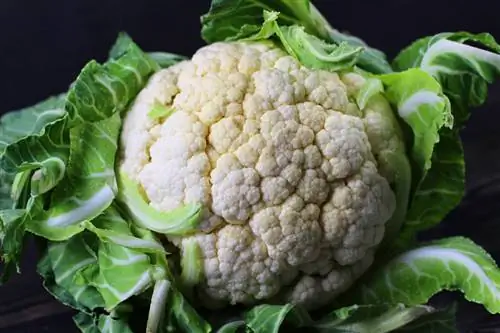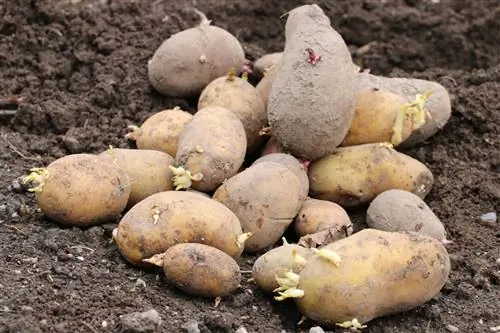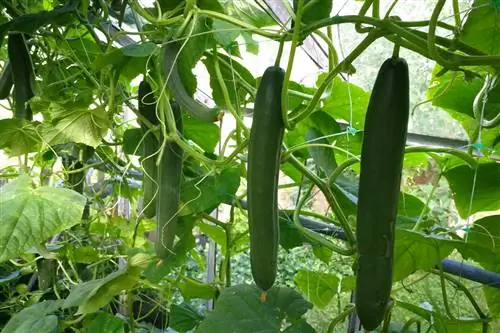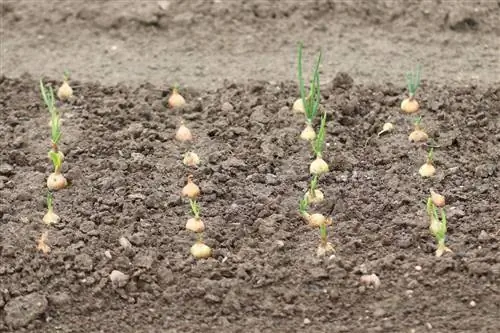- Author admin [email protected].
- Public 2023-12-17 03:39.
- Last modified 2025-01-24 12:45.
The white, fleshy, thickened flower branches with the not yet fully developed flower buds, the florets, are eaten from cauliflower. The right neighbors in the bed play an important role in ensuring optimal growth.
Typical characteristics of cauliflower
- Botanical name: Brassica oleracea var. botrytis
- One of the most popular types of cabbage
- Edible inflorescence in the middle of the leaves
- Closed thickened flower buds
- Develop into a firm, white head called a cauliflower head
- Location sunny, dry and not too hot
- Deep, loose, humus-rich and evenly moist soil
- Harvest from June to October
- The whole head is harvested
Tip:
To keep the cauliflower head white, it should not be exposed to the sun. Accordingly, place the inner bracts over the head and tie them together.
Good neighbors for a mixed culture
Eggplant (Solanum melongena)
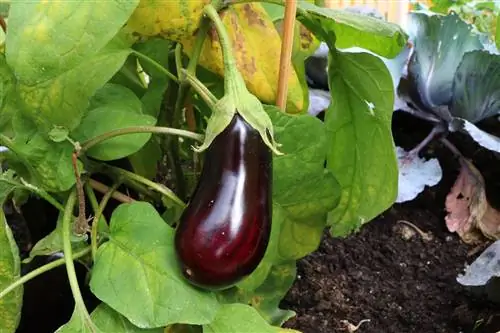
- A Mediterranean vegetable classic
- Cultivated as an annual
- Growth height 50-150 cm
- Cultivation outdoors, preferably in a greenhouse
- Outdoor sunny, sufficiently warm place
- Soil should be nutrient-rich
- Harvest from late summer to autumn
Tip:
Since the eggplant is a very sun-drenched plant, a place in front of the south wall of a building would be optimal if cultivated outdoors.
Bush bean (Phaseolus vulgaris)
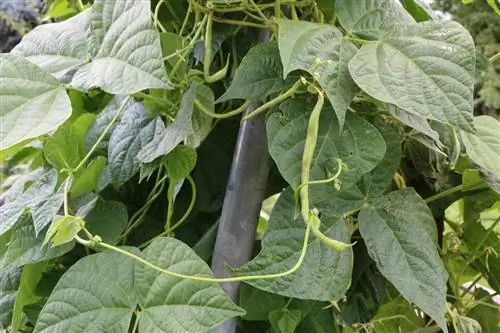
- Grows as an annual plant
- Reaches a height of 30-60 cm
- Prefers sunny to partially shaded locations
- Rather light, well ventilated and quickly warming floors
- Harvest after two to three months
Tip:
Beans leave plenty of nitrogen in the soil, making them a good previous crop, among other things. for cauliflower and leeks. However, they are incompatible with themselves.
Endive (Cichorium endivia)
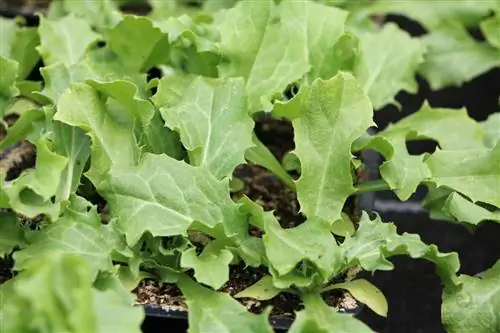
- Better known as frisée salad
- Cultivated as an annual
- Forms broad leaf rosettes
- Growth height 30-70 cm
- Grows well in warm, sunny and sheltered places
- Soil especially deep and rich in humus
- Harvest August into autumn
- Ideal follow-up fruit for heavy eaters
- For other daisy family plants, observe a four-year cultivation break
Peas (Pisum sativum)
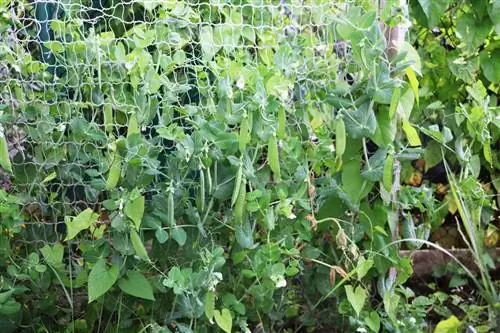
- Sugar, marrow, shell or pale peas
- Sugar peas particularly popular
- Grow annual and herbaceous
- Prefer sunny, airy locations
- Loose and fertile soil
- Observe crop rotation
- Do not grow in the same place until after five years at the earliest
- Harvest after 12-14 weeks
Cucumber (Cucumis sativus)
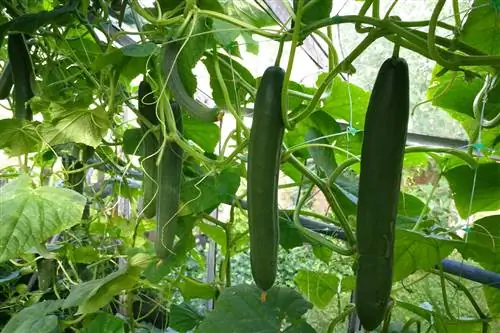
- Annual cultivated plant
- Prostrate or climbing growth
- Protected from the wind, full sun and warm, humid locations
- Soil humus and loose
- Should warm up quickly and not get muddy
- Observe a four-year cultivation break
- Comparatively high water requirement
- Harvest begins approximately three weeks after flowering
Kohlrabi (Brassica oleracea var. gongylodes)
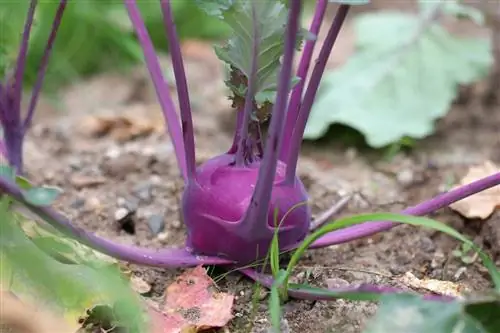
- A cultivated form of vegetable cabbage
- Fast growing cabbage
- Thickened above-ground shoot axis is used
- Formation of the sprout tuber in the first year
- Prefers partially shaded to sunny places
- Humus-rich, evenly moist substrates
- Culture duration 10-14 weeks
Tip:
If you harvest kohlrabi too late, it can quickly become woody and inedible. It is best harvested before the end of the growing season, especially early varieties.
Lettuce (Lactuca sativa var. capitata)
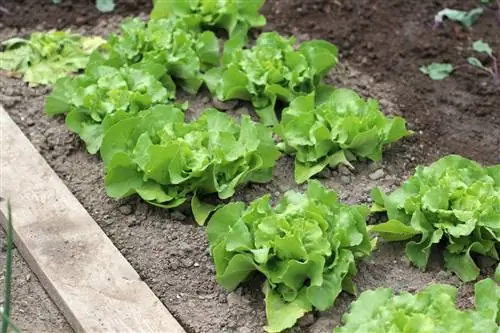
- Grows as one to two years old
- Loves sunny locations
- Growth restricted in lack of light
- Underground loose and deep
- Medium eaters need high humus and nutrient content
- PH value not below 5.5
- Harvest eight to ten weeks after sowing
Leeks/Leeks (Allium porrum)
- Biennial, herbaceous with growth heights of 60-80 cm
- Needs sheltered sunny to semi-shady place
- Soil should be deep and nutrient-rich
- More demanding than onions
- To form white stems, pile up leeks
- Harvest depending on variety and planting from June
Carrot/Carrot (Daucus carota)

- Annual cultivated root vegetables
- Sunny spot particularly suitable
- Grows very well on loose, stony, sandy-loamy soils
- Be sure to thin out
- There is no optimal harvest time
- The right time is a matter of taste
- The earlier, the sweeter and milder the carrot
Tip:
If the soil is too heavy and clayey, we recommend growing in a ridge culture similar to growing asparagus.
Peppers (Capsicum)
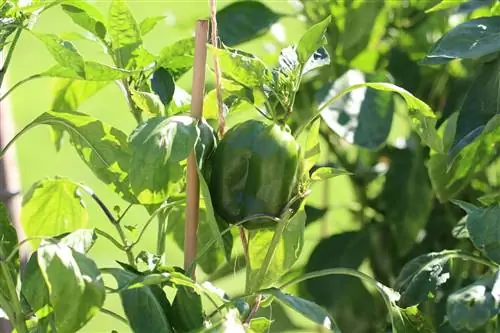
- Perennial herbaceous plants
- Both sweet peppers and sweet peppers
- Planting site should be very sunny, warm and protected from wind
- The warmer the location, the faster peppers ripen
- When planting, mix in compost and horn shavings
- Harvest depending on variety between July and October
broadbean (Vicia faba)

- Also known as broad beans, horse beans and broad beans
- Exceptionally cold-resistant
- Sowing possible before the Ice Saints
- Can grow up to 200 cm high
- Like all types of beans, it requires sufficient sun
- Thrives in heavy and moist soils
Tip:
Leguminoses should only be planted in the same place every four to five years.
Beetroot (Beta vulgaris)
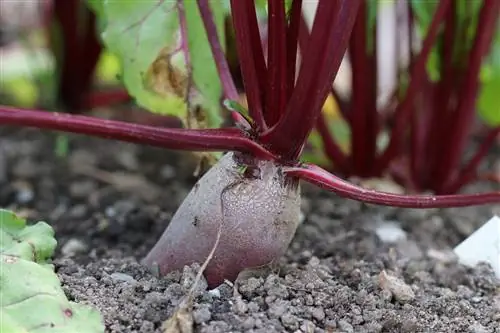
- Related to sugar beet and chard
- Different shapes and colors
- Grows as a herbaceous biennial
- Prefers sunny locations
- Also thrives in partial shade
- Harvest from July until the first frost
Celery (Apium)
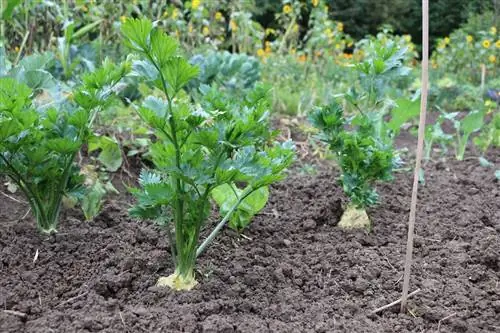
- Species of celery grow as annual or biennials
- Sunny to partially shaded beds
- Fertile, nutrient-rich soil, constant moisture
- Sandy, humus-rich clay soil ideal
- How the soil regularly during cultivation
- Harvest from October
Spinach (Spinacia oleracea)
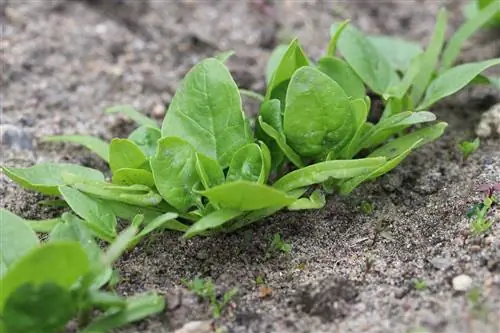
- Cultivation possible all year round
- Spring, summer, autumn and winter spinach
- Height 50-100 cm
- Location preferably sunny to partially shaded
- Varies depending on the type of spinach
- Loose, permeable and humus-rich soil
- pH value between 6.5 and 7.5
Tip:
Spring spinach can be harvested from May to June, summer spinach from June to August, autumn varieties from September to December and winter spinach in April.

